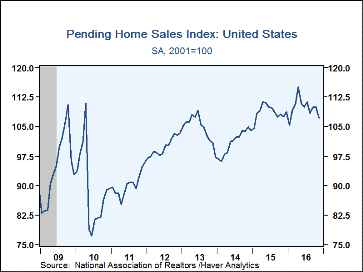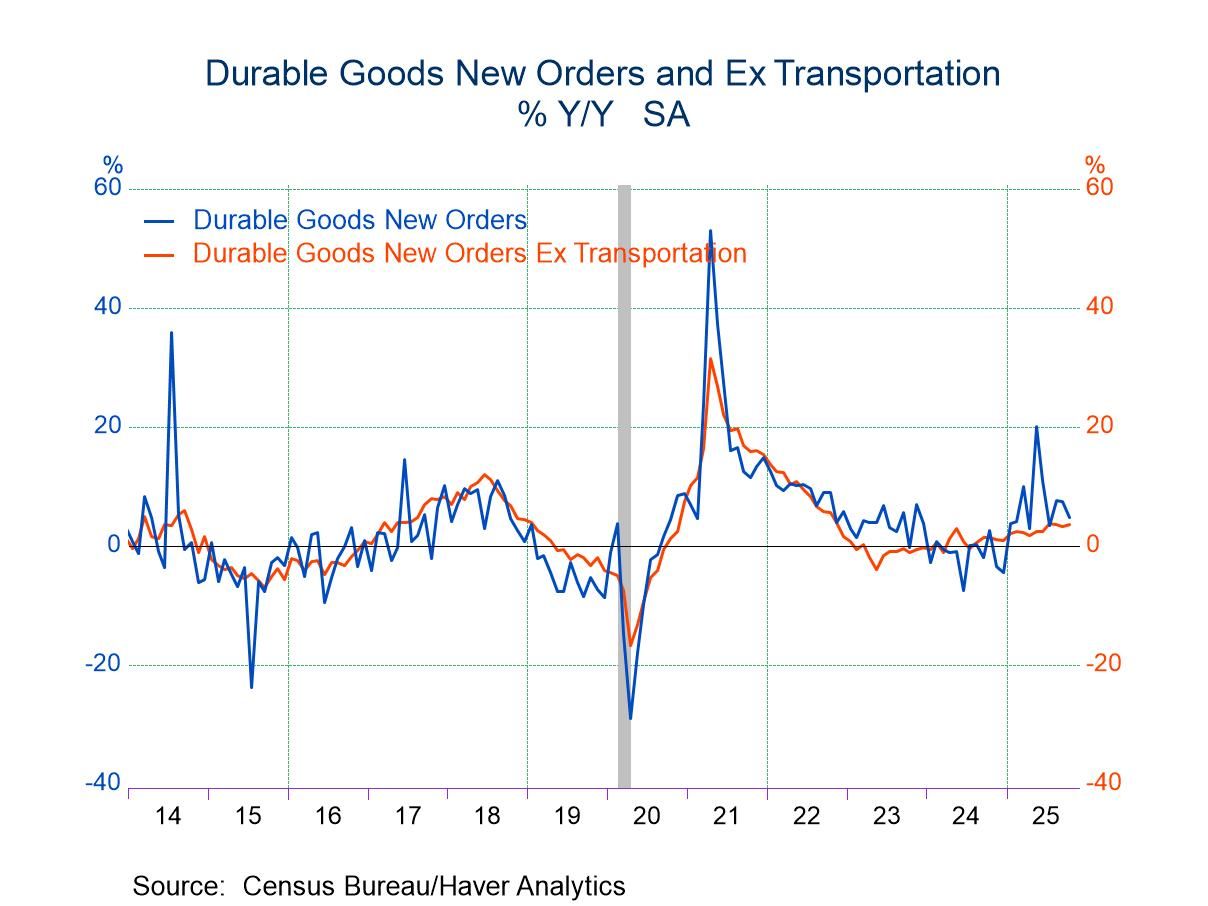 Global| Dec 28 2016
Global| Dec 28 2016U.S. Pending Home Sales Slump in November
by:Sandy Batten
|in:Economy in Brief
Summary
The National Association of Realtors (NAR) reported that pending home sales fell 2.5% m/m (-0.4% y/y) in November after having edged up only 0.1% (not revised) in October. These sales are reported as an index with 2001=100. The [...]
The National Association of Realtors (NAR) reported that pending home sales fell 2.5% m/m (-0.4% y/y) in November after having edged up only 0.1% (not revised) in October. These sales are reported as an index with 2001=100. The November reading of 107.3 was 6.7% below the April peak, but 39.2% above the June 2010 low. The NAR noted that the recent rise in mortgage rates and the continued lack of inventory were likely the primary factors behind the November decline.
Pending sales were generally weak last month across the country. They edged up 0.6% m/m (5.7% y/y) in the Northeast, but fell both monthly and yearly in the other three regions. Pending sales declined 2.5% m/m (-2.4% y/y) in the Midwest, fell 1.2% m/m (-1.3% y/y) in the South, and plunged 6.7% m/m (-1.0% y/y) in the West.
The pending home sales index is constructed to be analogous to the new home sales data from the Census Bureau. It measures home sales when the sales contract is signed, as are new home sales. In contrast, existing home sales are recorded when the sale is closed. In developing the pending home sales index, the NAR found that the level of monthly sales contract activity parallels the level of closed existing home sales in the following two months. The series dates back to 2001, and the data are available in Haver's PREALTOR database.
| Pending Home Sales (%, SA) | Nov | Oct | Sep | Nov Y/Y | 2015 | 2014 | 2013 |
|---|---|---|---|---|---|---|---|
| Total | -2.5 | 0.1 | 1.4 | -0.4 | 7.5 | -3.3 | 4.6 |
| Northeast | 0.6 | 0.4 | -1.6 | 5.7 | 8.0 | -0.4 | 6.2 |
| Midwest | -2.5 | 1.5 | -0.2 | -2.4 | 6.8 | -5.7 | 10.5 |
| South | -1.2 | -1.3 | 1.6 | -1.3 | 6.5 | -1.4 | 5.5 |
| West | -6.7 | 0.7 | 5.0 | -1.0 | 10.0 | -5.9 | -3.8 |
Sandy Batten
AuthorMore in Author Profile »Sandy Batten has more than 30 years of experience analyzing industrial economies and financial markets and a wide range of experience across the financial services sector, government, and academia. Before joining Haver Analytics, Sandy was a Vice President and Senior Economist at Citibank; Senior Credit Market Analyst at CDC Investment Management, Managing Director at Bear Stearns, and Executive Director at JPMorgan. In 2008, Sandy was named the most accurate US forecaster by the National Association for Business Economics. He is a member of the New York Forecasters Club, NABE, and the American Economic Association. Prior to his time in the financial services sector, Sandy was a Research Officer at the Federal Reserve Bank of St. Louis, Senior Staff Economist on the President’s Council of Economic Advisors, Deputy Assistant Secretary for Economic Policy at the US Treasury, and Economist at the International Monetary Fund. Sandy has taught economics at St. Louis University, Denison University, and Muskingun College. He has published numerous peer-reviewed articles in a wide range of academic publications. He has a B.A. in economics from the University of Richmond and a M.A. and Ph.D. in economics from The Ohio State University.








